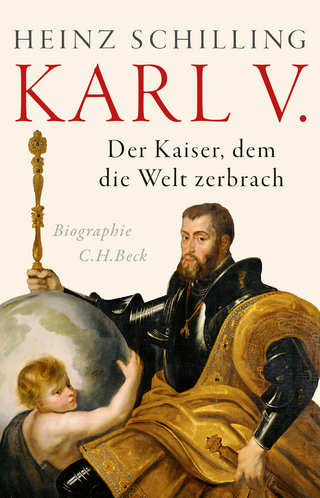
The Archaeology of Early Colonial Manila
A Hybrid City in Global History
Seiten
2025
University Press of Florida (Verlag)
978-0-8130-7921-9 (ISBN)
University Press of Florida (Verlag)
978-0-8130-7921-9 (ISBN)
- Lieferbar (Termin unbekannt)
- Versandkostenfrei
- Auch auf Rechnung
- Artikel merken
A view into the diverse culture of the Philippines in the sixteenth and seventeenth centuries Although Manila, capital city of the Philippines, played a critical role in economic and cultural exchanges between the East and the West during the sixteenth and seventeenth centuries, little is known about what life was like for its residents during this time. In this book, Ellen Hsieh uses archaeological, historical, and ethnographic resources to document the ways Manila was transformed by the arrival of Spanish colonists in 1571 and how the city in turn shaped the modern world.
Manila was uniquely positioned as a crossroads in the networks of Southeast Asia, East Asia, and Iberia, resulting in a hybridized culture where colonial Spanish, Indigenous Tagalog, and overseas Chinese groups exchanged goods and ideas. In The Archaeology of Early Colonial Manila, Hsieh analyzes material goods such as ceramics from Intramuros (the Spanish walled city) and Parian (the Chinese quarter) and illustrations from the Boxer Codex—a Spanish manuscript featuring images of people in the Philippines and surrounding areas—to illuminate the diversity of Manila society and to unravel the intricate power dynamics among these ethnic groups.
Bridging the gap in research between pre-Spanish and late colonial periods and amplifying the voices of non-elite, diasporic, and colonized communities often overlooked in historical documents, Hsieh provides an important focus on Manila’s contributions to world history during a period of intense globalization.
Manila was uniquely positioned as a crossroads in the networks of Southeast Asia, East Asia, and Iberia, resulting in a hybridized culture where colonial Spanish, Indigenous Tagalog, and overseas Chinese groups exchanged goods and ideas. In The Archaeology of Early Colonial Manila, Hsieh analyzes material goods such as ceramics from Intramuros (the Spanish walled city) and Parian (the Chinese quarter) and illustrations from the Boxer Codex—a Spanish manuscript featuring images of people in the Philippines and surrounding areas—to illuminate the diversity of Manila society and to unravel the intricate power dynamics among these ethnic groups.
Bridging the gap in research between pre-Spanish and late colonial periods and amplifying the voices of non-elite, diasporic, and colonized communities often overlooked in historical documents, Hsieh provides an important focus on Manila’s contributions to world history during a period of intense globalization.
Ellen Hsieh is assistant professor of archaeology at the Institute of Anthropology and deputy director of the Research Center for Underwater Archaeology and Heritage at National Tsing Hua University in Hsinchu, Taiwan.
| Erscheinungsdatum | 22.10.2024 |
|---|---|
| Zusatzinfo | 46 b&w illus., 22 tables |
| Verlagsort | Florida |
| Sprache | englisch |
| Maße | 152 x 229 mm |
| Themenwelt | Geisteswissenschaften ► Archäologie |
| Geisteswissenschaften ► Geschichte ► Regional- / Ländergeschichte | |
| Sozialwissenschaften ► Ethnologie | |
| Sozialwissenschaften ► Soziologie | |
| ISBN-10 | 0-8130-7921-7 / 0813079217 |
| ISBN-13 | 978-0-8130-7921-9 / 9780813079219 |
| Zustand | Neuware |
| Informationen gemäß Produktsicherheitsverordnung (GPSR) | |
| Haben Sie eine Frage zum Produkt? |
Mehr entdecken
aus dem Bereich
aus dem Bereich
Erinnerungen
Buch | Softcover (2024)
Pantheon (Verlag)
CHF 22,40


